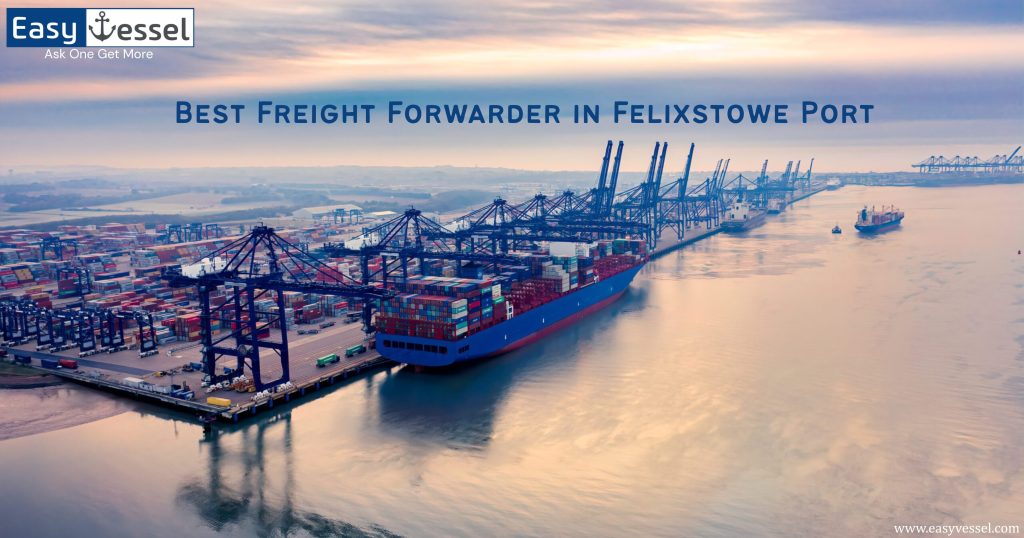- Freight rates, the charges for transporting goods via sea, air, or land, are influenced by various complex factors.
- As we approach the end of September, significant developments in global markets are shaping the outlook for these rates.
- Key factors include China’s ongoing banking crisis, which has led to a slowdown in manufacturing and exports.
- Fuel prices, global trade volumes, port congestion, labor costs, geopolitical events, and even seasonal demand changes.
- The recent stabilization of previously disrupted shipping routes, such as those affected by the Red Sea scenario.
- These changes indicate a potential decline in freight rates, offering businesses opportunities to optimize their shipping strategies and reduce costs in the coming weeks.
How China’s Banking Crisis Could Influence Freight Rates
China is currently grappling with a severe banking crisis, with 40 smaller banks collapsing and merging into larger ones. This crisis is driven by a downturn in the property market, poor risk management, and broader economic issues. Here’s how these financial troubles could impact global freight rates.
Key Aspects of the Banking Crisis
Here are key aspects of the banking crisis and its impact on freight:
Bank Failures and Mergers
In late June, 40 smaller banks in China were absorbed by larger institutions. This unprecedented consolidation affects $7.5 trillion in assets, which represents 13% of the banking sector. Many of these banks are struggling with a high rate of bad loans.
Consolidation of Troubled Banks
Most failed banks were merged into Liaoning Rural Commercial Bank, a newly established giant lender. This consolidation is creating larger, potentially riskier financial institutions, raising concerns about future stability.
Economic Slowdown
The broader Chinese economy is facing a downturn with declining construction, lower consumer confidence, and rising debt. This economic stress is heavily impacting smaller banks, which are showing high levels of non-performing loans and low profitability.
Major Banks Thriving
While smaller banks struggle, China’s largest banks, such as ICBC and China Construction Bank, are expanding. They are consolidating the failed institutions and growing their market share.
Impact on Freight Rates
The impact on freight rates can be influenced by several factors, each contributing to either an increase or decrease in costs. Here’s how various elements can affect freight rates:
Economic Slowdown and Shipping Demand
As China’s economy weakens, manufacturing and exports may decline. This reduction in economic activity could lead to decreased demand for shipping services, potentially lowering freight rates.
Financial Instability Effects
The banking crisis and economic downturn can affect global trade. Businesses may reduce shipping volumes or seek cost savings, contributing to a possible drop in freight rates.
Forecast for Lower Rates
Given the current economic conditions and financial instability in China, freight rates are likely to decrease. Reduced shipping demand and economic challenges could lead to more favorable rates for shippers and importers.
Key Developments
The freight shipping industry is experiencing a notable shift as rates, which had been rising for weeks, have begun to fall. Here’s a quick update on the recent changes and what to expect.
- Significant Drop in Freight Rates
As of July 12, the Shanghai Container Export Tariff Index (SCFI) dropped by 58.94 points to 3674.86, marking a 1.57% decline. This ends a 13-week streak of rising rates, signaling a gradual correction in the market. - Variability Across Routes
Freight rates are not declining uniformly. The U.S.-West Route saw the most significant drop of 5.5%, partly due to the introduction of new capacity. Initially, rates were set to increase, but the arrival of new ships and routes led to a decrease, with rates falling to $7,500 from an initial high of $8,500. - Market Dynamics
The fluctuations on the U.S.-West Route are attributed to increased supply from new ships and lower-than-expected cargo volume. Meanwhile, rates on the U.S.-East and European routes remain relatively stable. - Strategic Adjustments by Freight Forwarders
Large freight forwarders are reducing prices to stimulate demand, leveraging long-term contracts to offer rates as low as $7,000. This strategy could impact spot market rates and lead to further reductions. - Stability on Other Routes
The U.S. East Coast route holds steady at $9,800 to $10,400, and European routes remain between $8,700 and $9,000. The industry is closely monitoring these trends, with some planned price increases being canceled.
Analyzing the Impact of the Red Sea Scenario on Freight Rates from China to the USA
Freight rates between China and the USA have experienced significant fluctuations, particularly following the disruptions caused by the Red Sea scenario. Understanding these changes is crucial for businesses involved in international trade, as it directly affects shipping costs and logistics planning.
Pre-Red Sea Scenario: Higher Freight Rates
Before the disruptions in the Red Sea, freight rates from China to the USA were at elevated levels due to several factors:
High Demand for Shipping: The global shipping industry was facing unprecedented demand, driven by increased consumer spending and the need for restocking inventories post-pandemic.
Logistical Challenges: Congestion at major ports, especially on the U.S. West Coast, contributed to longer transit times and increased costs. Shipping lines passed these additional costs onto customers, resulting in higher freight rates.
Geopolitical Tensions: Political instability in various regions, including the Red Sea, added risk premiums to shipping routes, further driving up prices.
Post-Red Sea Scenario: A Noticeable Decline in Rates
After the resolution of the Red Sea disruptions, freight rates from China to the USA began to decrease:
Stabilization of Routes: The reopening and stabilization of the Red Sea route reduced the logistical challenges and risks associated with this crucial shipping corridor, leading to lower costs for shipping companies.
Introduction of New Capacity: The deployment of new vessels and the addition of alternative shipping routes helped alleviate some of the capacity constraints, which had previously kept rates high.
Economic Slowdown in China: China’s banking crisis and economic downturn led to reduced manufacturing output and lower export volumes. This decrease in demand for shipping services has further contributed to the drop in freight rates.
Comparing the Old and New Freight Rates
Before the Red Sea Scenario: Freight rates from China to the USA were significantly higher, often reaching up to $8,500 per container.
After the Red Sea Scenario: Following the stabilization of the shipping routes and the economic slowdown in China, rates have dropped by approximately $5,000, bringing them down to around $3,500 per container.
Summary:
The difference between the old and current freight rates from China to the USA highlights the significant impact of geopolitical events and economic conditions on global shipping costs. For businesses involved in international trade, staying informed about these developments is crucial for optimizing shipping strategies and managing costs effectively. As the industry continues to adapt to these changes, monitoring freight rate trends will be key to making informed decisions.
Conclusion
As the end of September approaches, the shipping industry will likely see a further freight rate decrease. Factors such as the halt in business loans by Chinese banks and the initial fall in rates from China contribute to this trend. Keeping an eye on these developments will help businesses make informed decisions about their shipping strategies and budget planning. For the most current updates on freight rates and to strategize effectively, consider consulting with a logistics expert or using advanced freight management platforms like Easyvessel.
References:
- Freight Rate By Wikipedia [1].
Frequently Asked Questions
Various factors influence freight rates, including fuel prices, global demand, carrier capacity, geopolitical events, and seasonality. Additionally, economic conditions and regulatory changes also play a significant role in determining rates.
Freight rates often fluctuate based on seasonal demand. For example, rates may increase during peak shipping seasons like the holiday period or harvest season. Understanding these trends can help businesses plan and budget for potential rate changes.
Small businesses can manage freight rate increases by consolidating shipments, negotiating better terms with carriers, exploring alternative shipping methods, and using third-party logistics providers (3PLs) to leverage their buying power.
Between January 2023 and March 2024, container freight rates experienced significant fluctuations. The lowest point was reached on October 26, 2023, when the cost to ship a 40-foot container dropped to just 1,342 U.S. dollars.
Freight rates are dropping because they reflect a slowing economy, with reduced demand for imports. This drop in demand, combined with an oversupply of vessels across shipping routes, forces companies to lower their prices to stay competitive. Additionally, eased supply chain disruptions and lower fuel costs are contributing to the reduction in rates.



